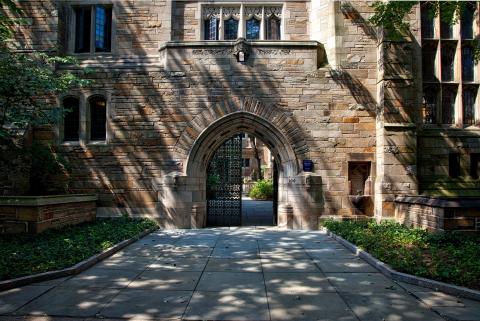From Affirmative Action to Anti-Racism: A Look at the Evolution of Inclusion Efforts in College Admissions
Apr 24,2023
Inclusion and diversity have become top priorities for third-level institutions across the US. As North America grows and changes, so too must college admission processes. This ensures they allow access to education for all those who want it.
Anti-racism efforts, gender equity, and promoting diversity have helped colleges. They have made their admissions processes more inclusive. However, change is still necessary to ensure education is available to everyone.
Colleges have made changes to their admissions processes to make them accessible. Learn how below.
How Have College Demographics Changed?
In the past, it was not uncommon for third-level institutions to accept only the very wealthy. These students were most often white and male. They had the most access to money and education.
White men were also more likely to receive encouragement when applying for college. It was also expected that they would receive an education as they joined the workforce.
In 1970, men accounted for over half of all students in colleges, totaling 58%. However, by 2025 this percentage will likely have changed to only 43%. Women will then make up 57% of all college students.
In 2019, there were over 2 million black students enrolled in colleges across the US. In 1966, this number was just over 280,000. This change is partly due to the civil rights movement and anti-racist efforts.
Much of this change is the result of incentives by colleges to increase diversity. With this change, people who have before felt excluded from education apply and attend. Thus, third-level education becomes accessible to all.
How Inclusive Excellence Has Helped
Inclusive excellence is a framework that promotes equity and diversity within colleges. Its conception followed a report in 2002 dictating that minority and underserved groups were not enrolling in third-level education. This was despite an overall increase in enrolment at the time.
Inclusive excellence helps diversity in colleges because it looks at many different groups who might face exclusion from higher education. The framework provides inclusion guidance for on-campus practices and the admissions process.
Inclusive Excellence Examples
Study abroad opportunities provide an example of inclusive excellence. These programs enable students to experience different countries and cultures. They also broaden the horizons of the student who takes part.
Internships are another way inclusive excellence supports minority students. Internships help build professional relationships in workplace settings. Students coming from a poverty background may find internships beneficial for career development.
Finally, inclusive excellence outlines different and inclusive ways to teach. By enabling hybrid and integrative learning, students can learn with ease. This stops students who have difficulty getting to class from missing out.
Affirmative Action
Affirmative action defines the laws that prohibit discrimination within education and employment. It seeks to protect women and members of the global majority. It asks how to challenge and change discrimination.
When it comes to college admissions, whether race and sex should be a consideration has been widely debated. On the one hand, offering admission aid to minority groups means they have greater access to higher education. Without affirmative action, these groups may be less likely to gain acceptance to particular colleges.
However, granting access to students based on their sex or race alone might be unconstitutional. Some colleges reserve specific spaces for minority group students to meet a quota. This doesn't guarantee these students the protection or support they need after acceptance.
Affirmative action can help decrease poverty amongst groups who have experienced it. Increased access to education is just one way this happens. It helps build a skilled workforce who can advance to higher-paying careers.
Is Affirmative Action Good or Bad?
The answer to this question depends on who you ask. In some states, including California, affirmative action is not allowed. One reason for this is something called the "mismatch effect."
Allowing students into schools simply by virtue of their race makes them more likely to fail is the main argument for this effect. Consideration for their academic ability is paramount. However, Richard Sander, the law professor who coined the term, has seen much criticism of his idea.
California's ban on affirmative action stopped already qualified students from applying. This finding does not correlate to the mismatch effect. Because these students are already educated, they are less likely to fail or drop out.
One argument in favor of affirmative action speaks to its effect on female students. Affirmative action has allowed women better access to employment. This is especially true in areas that were previously closed off to them.
This includes areas such as medicine. In fact, between 1972 and 1993, the number of female doctors rose from 10% to 22%. In 2021, 37% of all doctors were female.
Affirmative action has its advantages and disadvantages. However, it has been a progressive move forward in building diversity at the college level.
Why Might Affirmative Action Be Necessary?
Affirmative action is often seen as necessary to overcome the challenges faced by underserved groups. As white, middle to upper-class men have always had access to higher education, they have never developed an internalized sense of being unworthy of this education. However, members of the global majority, the working class, and women have been subject to this ingrained idea.
This has led to a self-fulfilling prophecy regarding third-level education. These groups were often told that they would never have access to higher education. As a result, they never felt able to apply for it.
The result was that the people in these groups worked in low-paying careers. They could not get the education required for high-paying work.
Affirmative action has been instrumental in ending this self-fulfilling prophecy. It has also helped create more accessible admission processes.
Race Inclusivity Efforts
In the past, education in general was only open to white students. Ethnic minorities, particularly black people, were sadly regarded as second-class citizens well into the 20th century. Because of this, they had no access to or right to education.
Anti-racist procedures are in effect to protect ethnic minorities. Some of these have had more impact than others in terms of how helpful they have been. Regardless, it is clear that having a diverse range of students leads to a more educated workforce and a healthier society.
How Are Some College Admission Processes Racist?
Black students are more likely to live in impoverished areas. So, they are more likely to attend schools with a higher poverty level.
These schools often perform poorly in academics compared to wealthier private schools. Thanks to the racial wage gap, black people are less likely to be able to afford these kinds of schools.
As a result, black students do not have the same opportunity to achieve highly in exams. This is especially true compared to wealthier white students. When these students apply, their test scores receive evaluation instead of their background.
This leads to a greater acceptance rate for college-age white students. Colleges with a high level of white students can leave ethnic minorities feeling as though they will be an outcast if accepted. Therefore, they may not apply at all.
The problem is that the admissions process is set against ethnic minority students. The person reading the admission may not be racist. However, they are part of an institutionally racialized system that excludes black people and ethnic minorities.
What is Being Done at a College Admission Level?
Whilst affirmative action has made colleges more diverse, it does not entirely resolve the college admission racism problem. As many as 6 in 10 Americans believe race should not be a factor when it comes to college admission. However, if race isn't accounted for to some degree, diversity may disappear altogether within colleges.
Arguably, the most simple way to take race into account fairly in the college admissions process is to consider it along with other factors. Perhaps an impoverished student has not achieved as highly as a wealthy white one. But, they may have achieved as highly as possible given what their circumstances allowed.
Many colleges are implanting this idea to try and bolster a fairer admissions process. In doing so, they can keep diversity alive and grant more access to black students and other ethnic minorities.
What About Racism Within Colleges?
Promoting anti-racism at the college level is key to ensuring a fairer, more open society for all. To deal with racism, third-level institutions have implemented several policies and programs. These help to ensure racism does not occur on campus.
Colleges do not tolerate hate speech and racist language on campus, either by students or faculty. This policy is in place to ensure black and ethnic minority students do not feel threatened or bullied at university. Students who engage with or use racist language and hate speech are often subject to very harsh disciplinary action.
Secondly, most colleges now have a dedicated diversity and inclusion officer on campus. It is their responsibility to ensure a campus is a safe place for students of every origin and skin color. They can also act as a support system for students who do experience racism on campus.
While these measures are not guaranteed to protect people from racism, they can offer solutions to racism on campus. It is important that the students who may suffer from racist attacks feel they have the support they need. This support should begin at the college admissions stage.
Gender Inclusivity Efforts
Throughout the 20th century, women most often took up a domestic role as wives and mothers. While men went out to earn an income, a woman was expected to look after the home.
As a result, less significance was given to their education. They were systematically less likely to join a skilled workforce. Because of this, society felt they didn't need the same education as men.
However, as the feminist movement grew and became established, the desire for women to be educated to the same standard as men also grew.
Educational facilities began to realize that women both wanted and needed education. As more jobs became available, there was a need for a workforce with certain skills. These skills were learned at third-level facilities and so women needed access to them.
Oberlin College
Oberlin College, founded in 1833, became the first college in the US to allow black and female students. While this seems like a small feat today, at the time it was incredibly influential and paved the way for other colleges to make the same changes. Women had access to study at this college from 1837 onwards.
Admitting women and black students was considered unwise. In doing so, Oberlin was among the first to promote a more equal society. The school still struggled with racism and sexism, but it made a change for the better in many ways.
Following this, more colleges opened their doors to female students. Today, there are very few all-male colleges left and they are generally viewed as outdated.
Title IX
Title IX was part of the Education Amendments Acts of 1972. Simply put, sex-based discrimination in schools, including third-level institutions, is illegal. If a school receives federal funding, it cannot discriminate against people based on their sex.
With the passing of Title IX, women were freer to apply for colleges and as likely to be accepted to them as men. Title IX also saw an increase in women participating in sports within education. This helped to establish more women receiving sports-based scholarships to attend university.
While it may seem obvious that discriminating based on sex is wrong now, it had less significance in the 20th century. Title IX gave women more confidence to apply for third-level intuitions. Fear they would experience rejection due to their sex can become less prominent.
Since then, more women have been able to gain new skills. These skills prepare them to earn higher incomes and become independent. As more women go to college and gain qualifications, more join the workforce and the economy improves.
Promoting Pronoun Awareness
The words people use to describe themselves have a large impact on their identity. In recent years, people have had more freedom to use the pronouns they feel best represents who they are. This is within the college admission process to make it more inclusive.
While you usually have to divulge your gender on an application, many colleges have offered more options than the traditional 'male' or 'female.' For example, 'unspecified', 'no gender', and ' non-binary' have all become commonly available choices. Many applications offer the chance to denote the gender assigned at birth should you wish to.
For those who have never questioned their gender, this may not seem like a significant change. However, for those that have, it allows them to feel both supported and respected regarding their gender.
Colleges are becoming more serious about disciplining those who refuse to use the preferred pronouns of another student. This is an act of discrimination that is not tolerated in the majority of colleges by either students or staff.
Regardless of the gender you feel best represents you, the college you chose should make you feel respected, secure, and safe from admission to graduation.
Underserved Communities Inclusion Efforts
Underserved communities, such as those living in poverty, do not have the same access to college as enriched communities. There are many reasons for this, but support is one of the main issues. That includes financial, educational, and systematic support that underserved communities rarely have access to.
For example, 130 million American people have difficulty reading. The college admissions process generally starts with a written application that requires reading skills. For those adults who can't read, the exclusion occurs in this initial step.
College admission processes help these people by making online applications more accessible. Thanks to technology, questions on an application can now be listened to on a computer. Some even allow answers to be spoken aloud and typed up by the computer.
Inclusion Efforts for Elderly People
In terms of college admissions, the elderly are often underserved. While they pursue third-level education less frequently than younger people, many still wish to go back into education.
The elderly people of today may not have had the same opportunity to study when they were young. This is one reason why some elderly people wish to return to higher education. If they are still working, having a degree or postgrad can also lead to a higher salary.
Inclusion efforts for elderly students include accessible interviews and fee waivers for applications. Some even offer free tuition for certain courses.
Elderly people may also have more difficulty physically getting to campus. That's why hybrid and remote learning has also helped make colleges more inclusive. These learning styles enable more people to join lectures and ask relevant questions from the comfort of their own homes.
College Inclusion Funding Efforts
While funding for minority groups is common in many colleges now, this was not always the case. Scholarships and monetary access for low-income students have come a long way. They have made it easier for people in minority groups to have access to higher education.
1944 United Negro College Fund
In 1944, the UNCF was created to offer financial aid to black students unable to attend college due to their financial situation. The fund also provided some support to universities that traditionally had admitted mostly black students.
In turn, third-level education became accessible to many more students. The result was a more skilled American workforce and a society that benefited from enhanced education.
Today, the UNCF has helped more than 500,000 students earn a degree or advance into higher education.
1964 The National Achievement Scholarship Program
The NASP was created to promote higher-level education to young black people. The fund promised to promote education to black students who had achieved highly at high school level.
The scholarship also encouraged third-level institutions to open their doors to black students following the civil rights movement. Doing so created black role models for other young black people, and also encouraged them to pursue more advanced education.
Almost 5 million black students have used the NASP to help them gain access to college and university. The program helped North America transition from a society governed by racist policies to one that allows better access to education for young black people.
The 1965 Higher Education Act
The 1965 HEA created and developed student loans, some of which are the basis for the current student loan system in North America today. By establishing these loans, access to third-level education became more widely available to students from minority groups.
For students who couldn't afford to pay for college upfront, these loans were crucial in allowing them access to higher education. Of course, this act was a government initiative as opposed to an inclusion effort on the part of colleges. However, by accepting payment via a loan, third-level institutions opened their doors to members of the working class.
Broaching Wage Gaps
One reason college admission processes have been more difficult for black and female students is because of the persistent wage gap in the US. Many college applications begin with a fee to process the application. This is just the first stage in the expensive process that is college admissions.
If women and ethnic minorities make less than white men, they must remain more vigilant about how they spend their money. Even with loans, college is an expensive experience, and the cost can put minority groups off the idea of attending.
That's why third-level institutions should consider wage gaps when it comes to the student admissions process. If they understand how wage gaps impact the students applying, they can make the necessary accommodations to allow these students greater access to higher education.
Disability Access
Colleges and universities today strive to make the admissions process as accessible as possible. Doing so has enabled students who identify as disabled or as having a disability more opportunities to pursue third-level education. This has created a more equal society and has allowed disabled people to earn more.
One way in which the college admissions process has evolved to aid disabled students is by making admissions interviews more accessible. Some work hard to ensure their school is wheelchair accessible, they have support for those who speak sign language, and application packs are made available in Braille.
It is important disability access doesn't just start and end at the admissions process. For significant change to occur, it must continue throughout a student's education, whether this is two years or four. Examples of good disabled access practices include ensuring buildings are accessible and allowing students the support they need for exams.
Avoiding Discrimination in the Admissions Process
In the early stages of college admissions processes, students are asked if they would like to disclose any disability they feel they have. This is usually done to ensure the student has the support they need. However, it is entirely optional and no one should feel they have to share this information if they do not wish to.
It is important to note that a school cannot reject any student's application on a basis of disability. Not only is this morally wrong, but it is also in fact illegal to do so. If you are applying to college with a disability, you should feel sure that your disability will not impact your chances of being accepted.
Modern-Day Diversity Initiatives
As modern ideas about gender and orientation continue to expand, so too must inclusion efforts. This is significantly important for the college admission process. They must adapt to the world as it adapts around them.
Many university application processes offer students the chance to divulge their sexual identity. This is a choice and not a requirement. However, by providing students this opportunity, they feel safe to be open about who they are.
This extends to the rights and safety of transgender students. As not all states actively support trans people, some colleges are not accessible for members of this community. Challenging these ideals is one way to increase diversity and inclusion among students.
The same process is available for religious identity. Most colleges in the US are open to students of all religions and will offer support to minority religions where possible. This results in increased diversity within schools and helps build a more open and accepting society.
Inclusion Efforts for Other Students
One way inclusion is increased in colleges is by bolstering diversity in other students. For example, by enabling white students to learn about black culture, empathy, and compassion develops. This results in a more tolerant campus and a safer learning environment.
Many colleges are making strides in this area. New groups that center around teaching and spreading diversity start every day on campuses across the country. All students are welcome to join these groups to learn and grow.
Faculty Based Inclusion
Having a diverse faculty can change the nature of a college or university. Lecturers with different cultures, ethnicities, genders, and economic backgrounds can help teach more than just their chosen subject. They help create an environment rich in diversity and can help students feel more at home on campus.
Faculty members can also act as role models for students who need them. A working-class student may be positively impacted by a lecturer who has grown up in a similar environment to them.
Colleges should make active efforts to employ a diverse range of staff. A diverse staff helps to show prospective students that they will become valued members of the college if they choose to join.
What Still Needs to Happen?
While the above efforts have made colleges more inclusive, they are not exhaustive. This is true both during the college admissions process and after it when a student is accepted. More must be done to ensure accessibility for all prospective students.
Inclusivity efforts cannot simply be for show and must actively work to protect students who may be vulnerable. This means listening to student concerns and making changes where necessary to promote inclusion.
Protection on campus is a major factor for many of these students. The discrimination they face within college grounds is often subtle and could be difficult to prove. Colleges must take any accusation of discrimination seriously.
Doing so allows proper investigations to take place. It means students who may face discrimination can get support if an incident occurs. It also promises disciplinary action against students who engage in discrimination.
Changes to the Admission Process Itself
College admission processes vary depending on the institution. So, it is difficult to suggest one general change in diversity policies that would work for each of them. Some have already made strides toward making their admission process as diverse as possible.
Ensuring the active participation of a diversity welfare officer could be a positive step forward. Women, ethnic minorities, and disabled students would have support from the outset of their college experience.
Support, where available, should increase diversity in colleges. This could be is financial or well-being support. It all helps create a more diverse society.
College admission processes need to remain open to all those who wish to study regardless of ability, race, or gender.
Inclusion Begins With Support
Third-level education is crucial for building a more informed and educated workforce. It also expands the minds of those who attend and leads to the betterment of society for all. That's why it's so important that it remains accessible for all who wish to attend.
Through proper inclusion efforts, this is possible. These efforts must begin at the initial stages of the admissions process. Following this, they should continue throughout a student's college education.
For more information on education and colleges, contact us with any questions.





